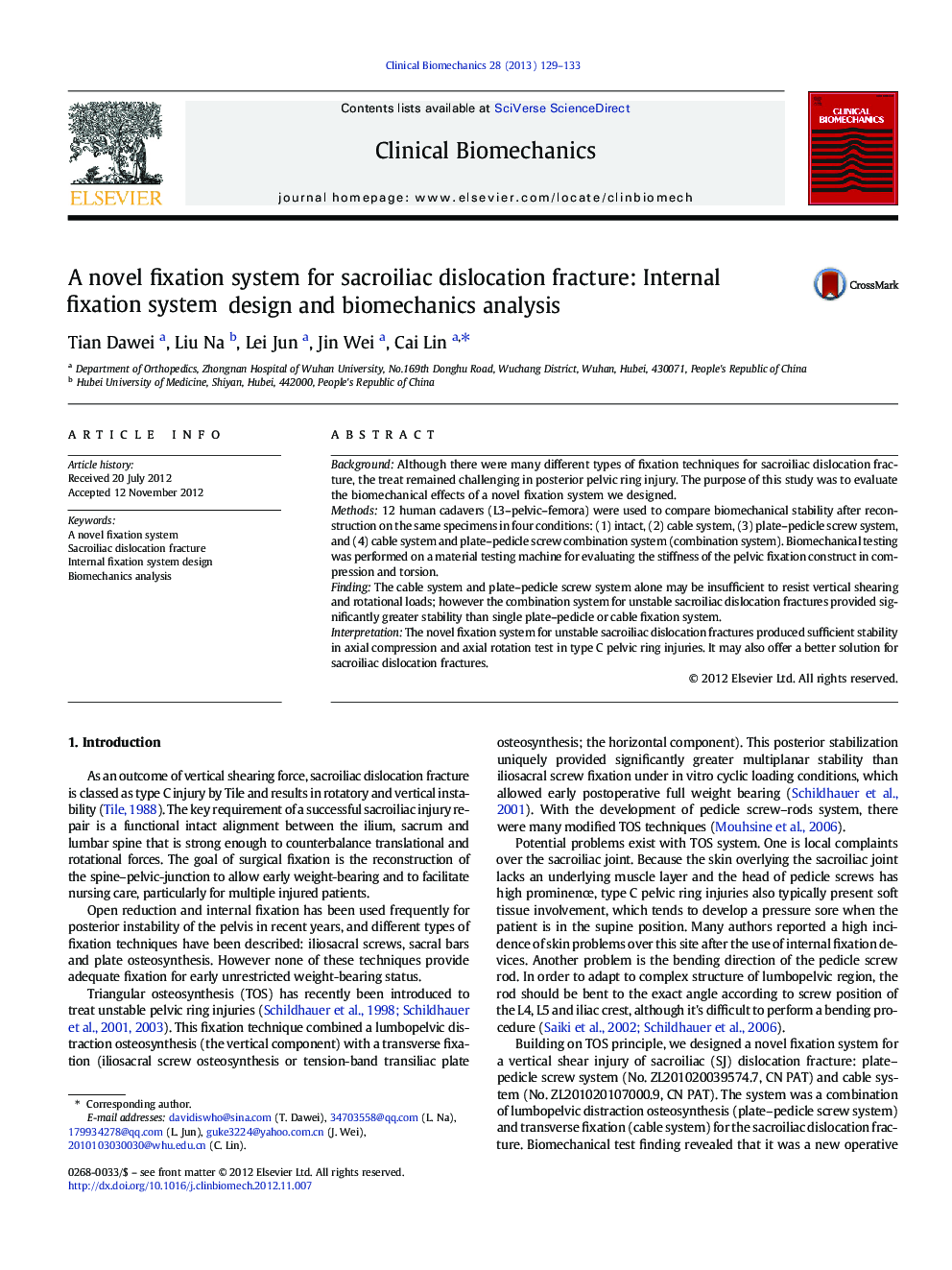| Article ID | Journal | Published Year | Pages | File Type |
|---|---|---|---|---|
| 6205044 | Clinical Biomechanics | 2013 | 5 Pages |
BackgroundAlthough there were many different types of fixation techniques for sacroiliac dislocation fracture, the treat remained challenging in posterior pelvic ring injury. The purpose of this study was to evaluate the biomechanical effects of a novel fixation system we designed.Methods12 human cadavers (L3-pelvic-femora) were used to compare biomechanical stability after reconstruction on the same specimens in four conditions: (1) intact, (2) cable system, (3) plate-pedicle screw system, and (4) cable system and plate-pedicle screw combination system (combination system). Biomechanical testing was performed on a material testing machine for evaluating the stiffness of the pelvic fixation construct in compression and torsion.FindingThe cable system and plate-pedicle screw system alone may be insufficient to resist vertical shearing and rotational loads; however the combination system for unstable sacroiliac dislocation fractures provided significantly greater stability than single plate-pedicle or cable fixation system.InterpretationThe novel fixation system for unstable sacroiliac dislocation fractures produced sufficient stability in axial compression and axial rotation test in type C pelvic ring injuries. It may also offer a better solution for sacroiliac dislocation fractures.
